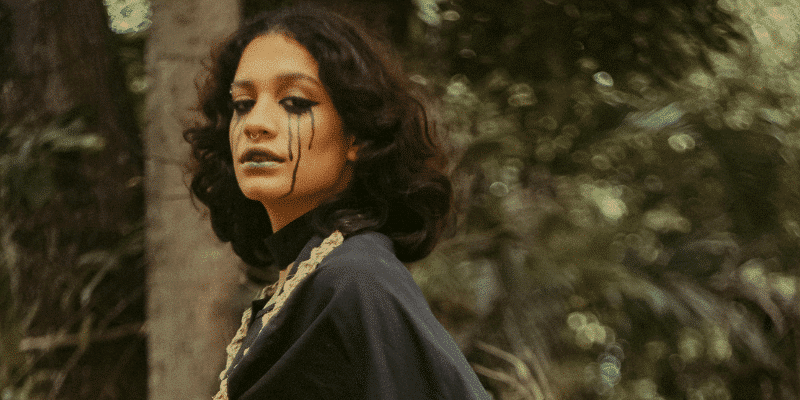The Terms Hispanic and Latino Continue to be Misunderstood
With the new U.S. Census categories in place, American Latinos (or however you choose to identify) will have more choices than ever. We explore why identity continues to be complicated.

On March 28, 2024, the Office of Management and Budget (OMB) added a new standard for race and ethnicity data collection in the U.S. Census, approved by the Biden administration. Now, a separate checkbox exists for “Hispanic or Latino” alongside all other racial categories. This change has been celebrated by many in the Latino community, and it reflects a significant shift in how the U.S. Census gathers data about this section of the population.
It’s also a significant step toward a more accurate understanding of the Latino population, which has been growing consistently for decades. Before this change, the U.S. Census collected data on Hispanic origin without accounting for race, which meant Latinos were undercounted because many identify with their Hispanic ethnicity and their race, not just one or the other. This is further complicated by the fact that both Hispanic and Latino aren’t races, but many who don’t identify with white, Black, or other racial categories are left in limbo and often choose Hispanic or Latino as their race.
In 2023, a survey conducted by OnePoll involving 1,250 adults reflected that fact. Out of 1,250 people surveyed, 250 identified as U.S. Hispanics/Latinos. The addition of the new U.S. Census category acknowledges this dual identity and is intended to help create a more precise understanding of the demographic.
The Potential for Black and Afro Erasure
While many Latinos are behind this new standard as a step toward more inclusivity, many others bring up the point that this new approach could complicate how Afro-Latinos identify themselves in the U.S. Census, essentially erasing Afro-Latinos from the overall picture. The argument is that including “Hispanic/Latino” as a category alongside “Black” implicitly positions blackness as separate from Latino identity, suggesting that the Black category is something exclusive to non-Latinos.
Another issue identified by critics is that the OMB’s definition of who can select “Black” is narrow and limited to people with African origins, explicitly excluding people from Black Latin American nations, like the Dominican Republic and Cuba, and also excluding Afro-Latinos from all over Latin America, including Colombia, Brazil, Ecuador, Panama, Nicaragua, and Venezuela.
It may seem like a small detail, but looking at the bigger picture, population statistics need to be accurate if they’re expected to reveal patterns and information about racial exclusion. Without that accuracy, systemic racism becomes more obscure and it makes racial equity more challenging to achieve. While the new OBM standard is a step in the right direction, inclusivity remains a work in progress.
“Hispanic” or “Latino:” What’s the Difference?
To understand why the addition of a “Hispanic or Latino” checkbox in the U.S. Census is so important to many, we have to consider the background. The United States boasts a vibrant and varied cultural mosaic, with many ethnicities and nationalities coming together to form a diverse America. When talking about Latin American roots, “Hispanic” and “Latino” are the main terms, but what’s the difference between them? And how well do Americans understand these terms?
The 2023 survey conducted by OnePoll revealed some surprising statistics about our understanding of these two terms. According to the survey, a bit more than four in ten respondents (41%) correctly identified the difference between the terms:
- Hispanic refers to individuals from countries that primarily speak Spanish and is considered an ethnicity.
- Latino relates to people with origins from Latin America – which includes Mexico, South and Central America, and the Caribbean, and is also considered an ethnicity.
- Neither of these terms refers to race, which is a completely separate categorization based on shared physical characteristics rather than shared cultural characteristics, which includes language, as noted above.
However, an equal percentage (41%) believed the exact opposite, while 11% were candid enough to admit they didn’t know the difference at all.
Hispanic and Latino are terms that describe different aspects of heritage and geography. “Hispanic” refers to people who come from Spanish-speaking countries, which could be from both outside and within Latin America. This includes countries like Spain, Mexico, and most of Central and South America where Spanish is the primary language. On the other hand, “Latino” refers to individuals originating from Latin America, regardless of the language spoken. This encompasses countries like Brazil (where they speak Portuguese) and various parts of Latin America where native pre-colonial languages are still spoken and it excludes Spain. So, while a person from Spain would be Hispanic but not Latino, a Brazilian would be Latino but not Hispanic.
Celebrating and Understanding “Hispanic Heritage”
The OnePoll survey touched on another important subject: Hispanic Heritage Month. A whopping 66% of participants said they celebrate this cultural observance. An even larger percentage, 85%, believed it’s pivotal for society to delve into Hispanic heritage. However, there’s a thirst for knowledge too. Around 81% expressed a desire to learn more about Hispanic/Latino culture, and 84% felt they should have been exposed to other cultures more during their childhood.
Shifting the lens to the Hispanic and Latino participants of the survey, some illuminating insights emerged. Over half (52%) felt that their non-Hispanic/non-Latino peers comprehended their culture “very well.” On the brighter side, 74% believed that their Hispanic/Latino culture received fair representation in mainstream society.
In the professional sphere, the respondents tended to work with other Latinos with 44% of respondents reporting that their workplaces were predominantly Hispanic/Latino, and 43% observing that individuals from their community filled most of the management or executive positions.
While strides are being made in understanding and appreciating the intricate differences and nuances within the Hispanic and Latino communities, there’s more ground to cover. As America becomes even more diverse, and the Latino community stands as the second-largest racial group in the U.S., understanding these subtleties and acknowledging the diversity within the Latino community, which unequivocally includes Afro-Latinos, isn’t just important; it’s essential.




